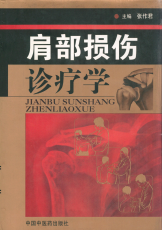
主要责任者: 张作君
责任方式: 主编
出版者: 中国中医药出版社
出版地: 北京
字数: 1120 千字
页码: 1-807
开本: 16
中图分类号: R274.917
装帧: 精
语种:中
定价:99.00
出版时间:2009-11
丛书多卷书否:否
书目简介:本册工具书共收录204条词条。
被引频次:28
| 词条 | 肩部损伤诊疗学 |
| 类别 | 中文百科知识 |
| 释义 |  主要责任者: 张作君 责任方式: 主编 出版者: 中国中医药出版社 出版地: 北京 字数: 1120 千字 页码: 1-807 开本: 16 中图分类号: R274.917 装帧: 精 语种:中 定价:99.00 出版时间:2009-11 丛书多卷书否:否 书目简介:本册工具书共收录204条词条。 被引频次:28 |
| 随便看 |
开放百科全书收录579518条英语、德语、日语等多语种百科知识,基本涵盖了大多数领域的百科知识,是一部内容自由、开放的电子版国际百科全书。